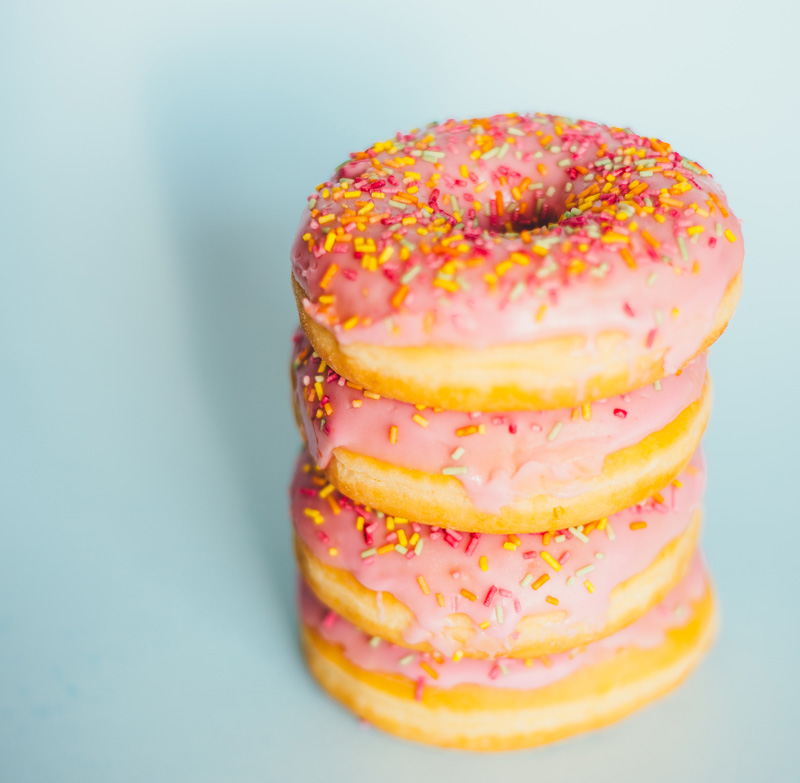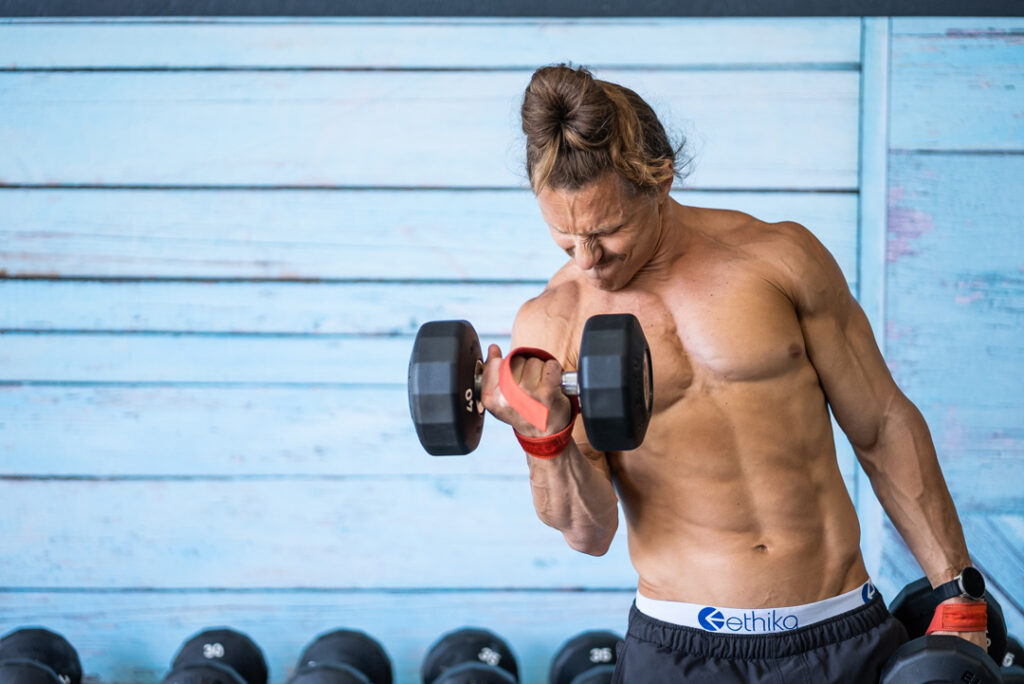Am I Training Too Hard to Lose Fat?
Weird question, right? Not if you’ve been putting in a ton of effort in the gym – but still don’t look the way you’d like to.
Common sense says the more you train, the more fit you’ll look. So how could this happen? Let’s break it down – and how to fix it fast.
You may have heard me talk about how important intensity in the gym is. Getting to 9/10 effort, just shy of failure, is crucial for muscle and strength.
You may have also heard me say that too much intensity can be a bad thing. Burnout, injury, and plateaus can ruin your gains for good.
Well which is it? Is intensity good or bad?
Getting Crushed - By the Wrong Type of Training
When people set out to lose body fat, they often make a crucial mistake: too much high-intensity cardio.
Many people don’t realize they’re actually in this camp. This is because high-intensity cardio has changed its look and feel so much over the years.
Boot camps, cardio circuit training, and even the beloved CrossFit WOD are all high-intensity cardio in disguise. Sure, you may be holding dumbbells – but the type of energy burned in this workout won’t help you burn calories later.

Up to a certain point, training burns energy to put you in a caloric deficit. Burn more than you eat and you’ll lose weight. But beyond that point, training with MORE INTENSITY, and for MORE DURATION, only gives diminishing returns.
This, in turn, leads to:
- Appetite wonkiness – not hungry, then starving!
- Over-indulging with the “I earned” it mentality
- Metabolic adaptations such as slowing basal metabolism, and what you burn when you’re not in the gym
- Shifts in stress hormones like cortisol as well as appetite-regulating hormones. Hunger may be ever-present, you never feel full – and fat loss comes to screeching halt.
Suddenly, your extra HIGH-INTENSITY effort has a negative impact on your body composition. Weight and body fat start to increase.
Surprising Stats: the Calories Cardio Burns
High Intensity Cardio
8-20 calories per minute*
Mean: 14 calories/minute
20 min = 280 Calories
Low Intensity Cardio
50% pace of high intensity
7 calories/minute
40 min = 280 Calories
Resistance Training
1 hour session burns between 200-400 calories
60 min = 280 Calories
*This is hard to quantify exactly, since there are so many different types of high-intensity cardio out there. But 8-20 is an agreed-upon range.
Does this mean high intensity is the winner for burning the most amount, in the shortest amount of time?
Actually, yes – but there are trade-offs.
- High-intensity cardio is WAY HARDER – it can actually make you nauseous. If you are having an off day, you might not feel up for doing it and skip it. Or you won’t go hard enough to get the true impacts.
- High-intensity cardio leaves you exhausted – this will impact the rest of your day significantly. You might move less in your day. You might not have the energy for important life tasks or work. And you might miss out on things you want to bring energy to because you are zapped.
- High-intensity Cardio leaves people craving carbs and junk food – your brain is smart enough to know when it just did something really demanding. It wants to maintain homeostasis and will send you seeking calories. The easier and more available they are the more you’re going to desire them if you have just done very high-intensity work.
Calorie Burn - For the Other 23 Hours
Another common mistake that hard chargers make is forgetting the other 23 hours in their day spent outside the gym.
In the big picture, calories burned in training don’t matter much.
- If you burn 280 calories in the gym, but you burn 2500 on average per day, then your gym session is around 11% of your total calories burned.
- For someone burning closer to 3200 calories a day we are talking about 8%.
- And for someone at 1800 calories per day, it is just 15% of your total calories burned in the gym.
So if you push that HIGH-INTENSITY cardio for an additional 5-10 minutes, you can maybe move the needle on total calories by 100 calories at best.

On the flip side, there’s a danger in too much intensity in the gym.
If you push HIGH-INTENSITY so hard that you come away wiped out, you may turn into a couch potato for the rest of the day. Bye bye too an extra 200-300 calories that you might have burned by being on your feet more – doing chores, taking a quick walk, or even fidgeting.
If you push intensity hard, you might go seeking “earned it” calories. A“small cookie” that is 200 calories just wiped out the effort on that WOD.
Taken together, decreasing daily activity outside the gym, plus eating reward foods, can shift your calorie balance 400-500 calories towards storing fat – not losing it.
How to Turn the Tide
Fortunately, I have great news for hard chargers: you know how to give great effort. And shifting intensity toward resistance training can deliver incredible results.
Remember the stats from above? Strength training can be just as effective as cardio at burning energy.
But it keeps on giving, too.
- When exposed to excessive cardio, the body might lower its resting metabolic rate, conserving energy.
- High-Intensity cardio, when overdone and in particular without adequate weight training, can lead to muscle wasting, thereby dropping the metabolic rate.
- Over time, the body gets more efficient at cardio, burning fewer calories for the same workout.
None of these happen with weight training when progressive overload is used.
When you shift your effort to weights instead of cardio, you can:
- Put more muscle on your body, which burns more calories at rest
- Recover better, leading to more energy for training and throughout the day
- Manage appetite instead of insatiable hunger
What the Science Says
I read this study*, and a review of it by Menno Henselmans
Here are the take-home points:
- A calorie deficit is key for losing weight
- Cardio and weights burn similar amounts – but people quit high intensity cardio sooner
- Weight training also elevates your metabolism an hour or so after training, burning an extra 50-100 cals
- As your body repairs from weight training, it also burns another 100 cals or so for up to 24-48 hours
- Lifting preserves muscle – even as you lose fat
- More muscle = burning more calories at rest. (Cardio doesn’t do this.)
- Weight training suppresses appetite better than high intensity cardio
- Diminishing returns are a thing – our bodies start to conserve calories for survival instead of burning them away.

How to Give High Effort and Lose Fat Too
- Nutrition: Dietary adherence is KEY for body changes. A training program that makes it easiest to follow your diet is so important. Calorie maintenance or a calorie deficit are crucial for any fat loss goals. Find your numbers with my free macro calculator.
- Balance Intensity: High intensity can be beneficial, especially if applied to resistance training. But be careful to not put too much of your intensity towards the wrong type of cardio if your goals are fat loss or body composition changes. A program like Persist PUMP is ideal.
- Lift Heavier and Slower: Instead of fast repetitions with lighter weight, slow down and build strength and muscle week after week. You may need to lift heavier than you’re used to. Progressive overload is the way to go – like in my Persist training program. Check it out for two weeks free!
